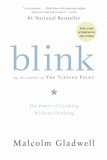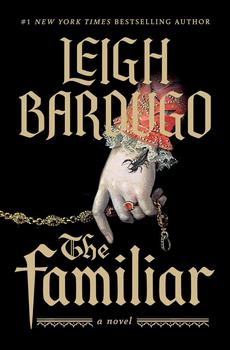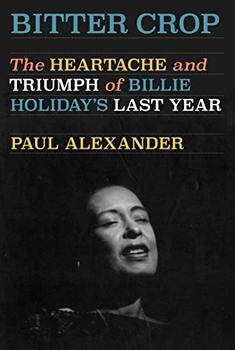Summary | Excerpt | Reading Guide | Reviews | Beyond the Book | Readalikes | Genres & Themes | Author Bio

Critics' Opinion:
Readers' Opinion:
First Published:
Jan 2005, 288 pages
Paperback:
Apr 2007, 320 pages
 Book Reviewed by:
Book Reviewed by:
BookBrowse Review Team
Buy This Book
ONE
The Theory of Thin Slices: How a Little Bit of Knowledge Goes a Long Way
Some years ago, a young couple came to the University of Washington to visit the laboratory of a psychologist named John Gottman. They were in their twenties, blond and blue-eyed with stylishly tousled haircuts and funky glasses. Later, some of the people who worked in the lab would say they were the kind of couple that is easy to like—intelligent and attractive and funny in a droll, ironic kind of way—and that much is immediately obvious from the videotape Gottman made of their visit. The husband, whom I'll call Bill, had an endearingly playful manner. His wife, Susan, had a sharp, deadpan wit.
They were led into a small room on the second floor of the nondescript two-story building that housed Gottman's operations, and they sat down about five feet apart on two office chairs mounted on raised platforms. They both had electrodes and sensors clipped to their fingers and ears, which measured things like their heart rate, how much they were sweating, and the temperature of their skin. Under their chairs, a "jiggle-o-meter" on the platform measured how much each of them moved around. Two video cameras, one aimed at each person, recorded everything they said and did. For fifteen minutes, they were left alone with the cameras rolling, with instructions to discuss any topic from their marriage that had become a point of contention. For Bill and Sue it was their dog. They lived in a small apartment and had just gotten a very large puppy. Bill didn't like the dog; Sue did. For fifteen minutes, they discussed what they ought to do about it.
The videotape of Bill and Sue's discussion seems, at least at first, to be a random sample of a very ordinary kind of conversation that couples have all the time. No one gets angry. There are no scenes, no breakdowns, no epiphanies. "I'm just not a dog person" is how Bill starts things off, in a perfectly reasonable tone of voice. He complains a little bit—but about the dog, not about Susan. She complains, too, but there are also moments when they simply forget that they are supposed to be arguing. When the subject of whether the dog smells comes up, for example, Bill and Sue banter back and forth happily, both with a half smile on their lips.
Sue: Sweetie! She's not smelly . . .
Bill: Did you smell her today?
Sue: I smelled her. She smelled good. I petted her, and my hands didn't stink or feel oily. Your hands have never smelled oily.
Bill: Yes, sir.
Sue: I've never let my dog get oily.
Bill: Yes, sir. She's a dog.
Sue: My dog has never gotten oily. You'd better be careful.
Bill: No, you'd better be careful.
Sue: No, you'd better be careful. . . . Don't call my dog oily, boy.
1. The Love Lab
How much do you think can be learned about Sue and Bill's marriage by watching that fifteen-minute videotape? Can we tell if their relationship is healthy or unhealthy? I suspect that most of us would say that Bill and Sue's dog talk doesn't tell us much. It's much too short. Marriages are buffeted by more important things, like money and sex and children and jobs and in-laws, in constantly changing combinations. Sometimes couples are very happy together. Some days they fight. Sometimes they feel as though they could almost kill each other, but then they go on vacation and come back sounding like newlyweds. In order to "know" a couple, we feel as though we have to observe them over many weeks and months and see them in every state—happy, tired, angry, irritated, delighted, having a nervous breakdown, and so on—and not just in the relaxed and chatty mode that Bill and Sue seemed to be in. To make an accurate prediction about something as serious as the future of a marriage—indeed, to make a prediction of any sort—it seems that we would have to gather a lot of information and in as many different contexts as possible.
This is the full text of Chapter 1 of Blink (pages 18-47). Copyright © 2005 by Malcolm Gladwell. All rights reserved. No part of this book maybe reproduced without written permission from the publisher, Little, Brown & Co.





The House on Biscayne Bay
by Chanel Cleeton
As death stalks a gothic mansion in Miami, the lives of two women intertwine as the past and present collide.

The Flower Sisters
by Michelle Collins Anderson
From the new Fannie Flagg of the Ozarks, a richly-woven story of family, forgiveness, and reinvention.

The Funeral Cryer by Wenyan Lu
Debut novelist Wenyan Lu brings us this witty yet profound story about one woman's midlife reawakening in contemporary rural China.
Your guide toexceptional books
BookBrowse seeks out and recommends the best in contemporary fiction and nonfiction—books that not only engage and entertain but also deepen our understanding of ourselves and the world around us.